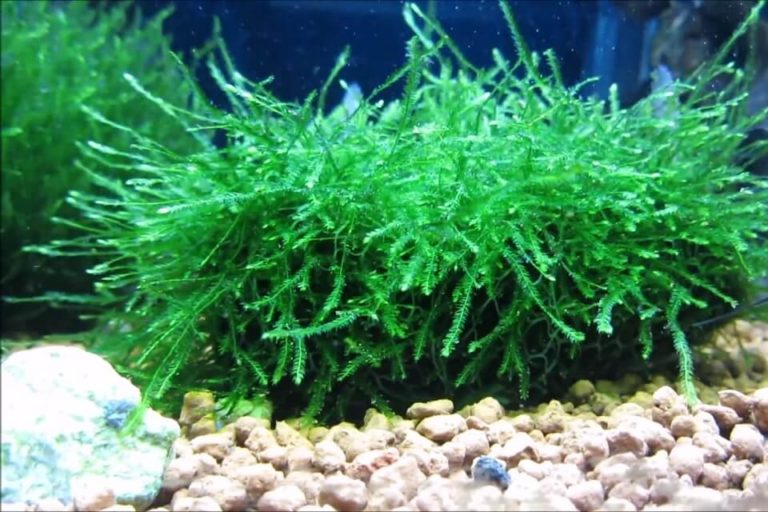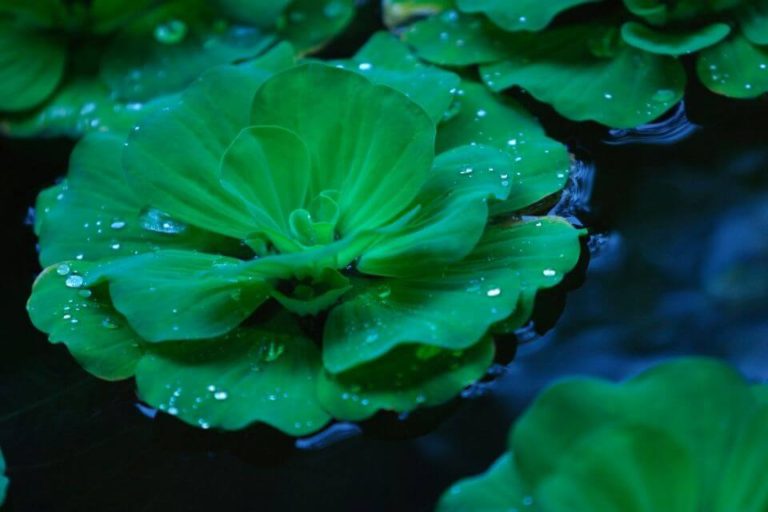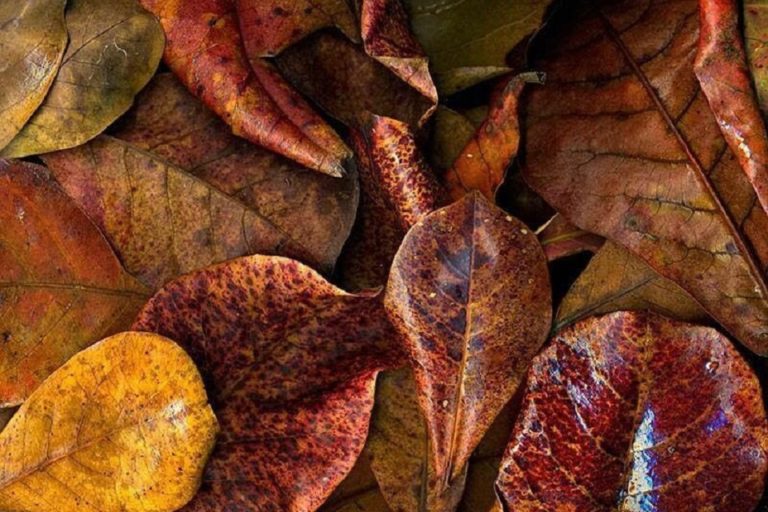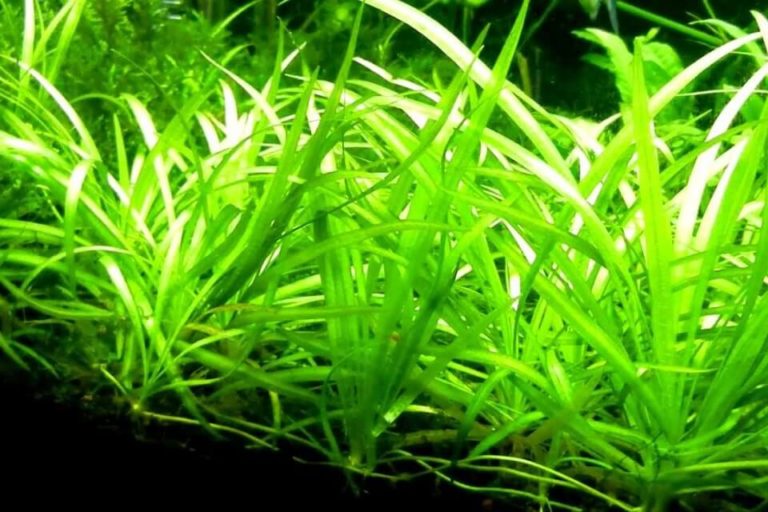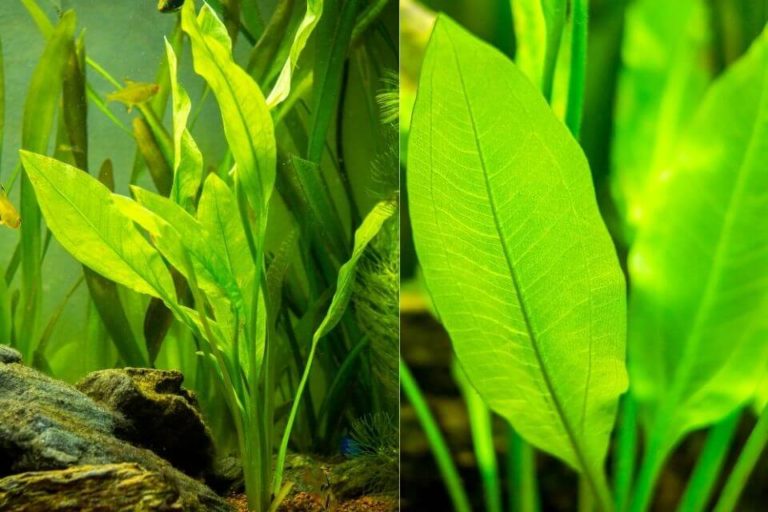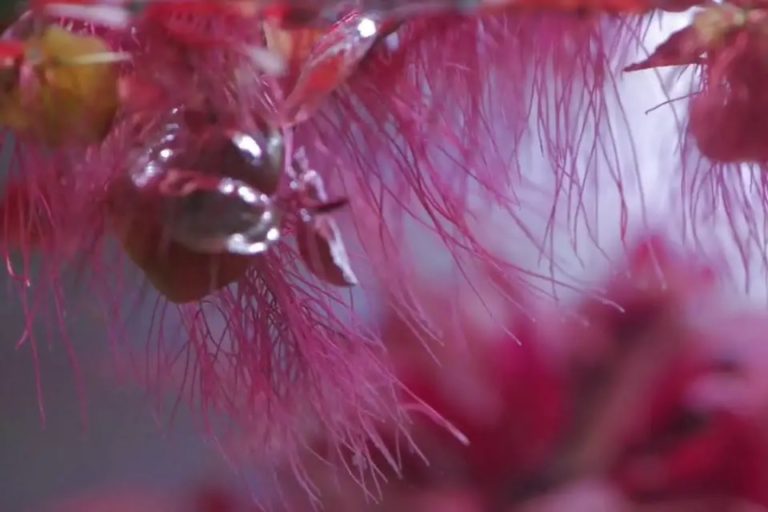Anubias Nana Plant: Complete Guide To Care, Planting And Propagation
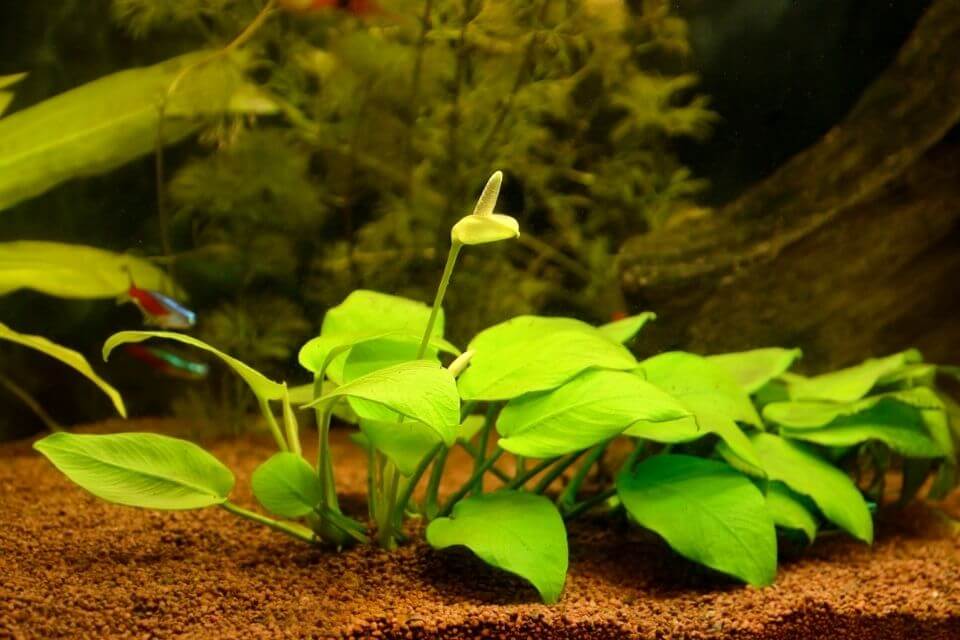
Aquarium plants add life to a fish tank and enable the simulation of natural underwater environments in your aquarium. A good aquarium plant such as Anubias Nana must be compatible with most of the fish you keep in your tank, easy to maintain, and effortless to propagate.
If you have been searching for such a plant in vain, then Anubias Nana aquarium plant with all these characteristics. Resembling a peace lily, the Anubias Nana plant is a green, hardy plant and one of the most popular live aquarium plants for aquarists globally.
Growing this plant in tank conditions is quite easy and it can even survive on its own. The plant comes in a wide range of sizes and there is a perfect option for every tank size.
When well maintained, the Anubias Nana plant will keep the water in your fish tank tidy and in the required quality. It will also provide a great habitat for your hiding or breeding fish.
Are you already excited about cultivating this unique and interestingly named aquarium plant? This guide will teach you all the details about care and maintenance requirements for the Anubias Nana.
| Quick Facts: | |
|---|---|
| Common Names | : Anabias Nana, Anubias Barteri, Dwarf Anubias, Nana, Anubias Round Leaf |
| Scientific Name | : Anubias barteri var. nana |
| Family | : Araceae |
| Origin | : Congo, Mali, Nigeria, and Cameroon |
| Care Level | : Easy |
| Growth Rate | : Slow |
| Size | : 6 to 8 inches width and height |
| Growth Conditions | : Partially or fully submersed |
| Propagation | : Cutting stems, Rrhizome division |
| Placement | : Buried in the substrate or attached to rocks or wood |
| Lighting | : Moderate |
| Minimum Tank Size | : 10 gallons |
| Temperature | : 72° - 82 °F (22 - 28 °C) |
| Water Hardness | : 3 - 8 dKH |
| Water pH Level | : 6 - 7.5 |
| CO2 Level | : Low |
Overview Of Anubias Nana Plant
Scientific name: Anubias barteri var.Nana
Other names: Anubias Barteri, Dwarf Anubias, Nana, Anubias Round Leaf
The Anubias Nana is a freshwater aquarium plant from the Araceae family and a native of West Africa. It is also highly populated in some sections of Asia. The plant boasts broad, deep-green leaves that livens up a tank fish and keeps the habitat looking seamlessly natural.
Its stem is thick and green too and is strong enough to hold the plant against any activity of your tank fish. With its short, dense mat-like growing pattern, the plant provides great habitat for fish that are bottom dwellers.
Although the plant can be fully or partially submerged, you will never worry that it will take up much of the prime upper sections of the fish tank. The plant grows to 6 to 8 inches in height.
Planting this plant is pretty basic and you only need to place the stems in a small amount of substrate. Propagation is as simple as cutting a stem with three leaves and replanting it in another section in the tank’s substrate.
There isn’t much you need to do to maintain this aquarium plant. With a quick trim several times a year, the plant will survive just fine. The plant is even known for recovering from basic cultivation mistakes as well as surviving in a wide range of environments.
Origin, Distribution, And Availability
This plant’s origin is in West Africa in countries such as Congo, Mali, Nigeria, and Cameroon. The plant is also well populated in some parts of Asia.
In the wild, Anubias grow along river banks and areas either partially or fully submerged in the shallow waters. This growing adaptation helps it get enough sunlight, a raw material in photosynthesis.
The availability of this aquarium plant is excellent. From local pet stores to online aquarium plants and pet stores, you will find this plant as conveniently as getting the most common tank fish. You may even find this plant in some home goods stores.
When buying Anubias Nana for the first time, you need to ensure that you get a healthy, high-quality stock. You need to pay much attention to the leaves and stems, checking for any damage, weakness, or discolorations. A good, high-quality piece of Anubias Nana should not cost you more than $5.
To create a good display and coverage in your tank, you will need a few of this plant’s pieces. The cuts may be sold without any attachment or attached to bogwood or rocks and the option will depend on the kind of transplanting you will need.
Appearance, Size, And Growth
The Anubias Nana is a relatively small aquarium plant (6 to 8 inches) with wide, stunningly shaped leaves. The leaves are thick and leather-like and tend to branch away from the tip. They form a teardrop appearance that looks very stunning in a fish tank.

It can even be the center of attraction if placed in a tank with non-ornamental fish. The underside of the leaves is greener than the top side, with clear diagonal lines that run from the center vein to the edge of the broad leaves.
The Anubias Nana plant produces a white flower both in a partially submerged state and a fully submerged state. The plant has thick white roots that hold the deep green stems in place. Since the roots are known to move through the substrate effortlessly, you should not completely bury them.
The plant can even grow around decorating features in your tank, such as rocks, so you can channel some roots to these elements to enhance the plant’s charm. Note that most of these features will only come out right when the plant is kept healthy from a young age.
Plant Anubias Nana In Aquarium
As mentioned above, you only need to bury the stems you buy or cut from your existing Anubias just below the surface of the substrate. If the cuts have already developed roots, you should avoid burying them entirely, as doing this may lead to rotting.
You can also grow it attached to the rocks or other decorations in the tank. To secure the plants to these elements, consider using a clear fishing line and then remove it when the plant has developed roots and becomes individually attached.
Where you plant your Anubias in the tank will be determined by your fish’s swimming or dwelling behavior. You should only plant the Anubias Nana, where it will not obstruct the smooth navigation of the other tank dwellers.
The ideal spacing between two Anubias plants should be 2 to 3 inches and hence you should consider this when planting. Note that overcrowding the plants will lead to light and nutrients competition and some plants will not thrive in the long run.
Anubias Nana Plant Care And Maintenance
-Tank Size And Tank Setup
Anubias Nanas can be grown in a tank of many sizes as they come in a wide variety of sizes. Although this plant will thrive in all tank sizes, it is recommended to grow it in a tank that is at least 10 gallons in size.
The tank setup is the most crucial part as the plant also comes with some requirements. Let’s check out some of these requirements in the following topics:
-Water Parameters And Conditions
Although the plant is quite hardy, you still need to maintain optimum water conditions to keep it healthy and all green. Here are the recommended water conditions and parameters for this plant:
Water temperature: 72 °F – 82 °F (22 – 28 °C)
Acidity: 6 – 7.5 pH
Hardness: 3 – 8 dGH
To complement the cleaning work that the Anubias plant does on water, you need to do water changes weekly. This will control the levels of nitrates keeping toxins on the low and the above conditions stable.
-Lighting
The Anubias Nana does not require any specific kind of lighting and a standard aquarium lighting system will suit it just fine. No matter the kind of lighting system you use, ensure that the light reaches the leaves, as they demand enough of it since they are rich in chlorophyll.
Please avoid floating plants or objects that may block light from reaching the bottom, growing Anubias Nana.
-Take Care And Maintenance Of Anubias Nana
First, the tank should have a fined-grained substrate (for example, sand) to enable easier penetration of the plant’s root for support and nutrients absorption.
Nutrient supplementation in case of stunted growth may be done. Also, you can infuse carbon dioxide into the tank to supplement the amount produced by the fish as they respire. As you add these components, you should follow the manufacturer’s recommendations to avoid harming your fish.
The tanks should also be kept clean at all times to keep the plant healthy. If you are keeping fish in the tank, this is even more important. Note that keeping the tank clean translates to clearer water, better light penetration, and thus enhanced photosynthesis.
Compatible Tank Mates For Anubias Nana Plant
One of the most impressive features of this aquarium plant is that it is compatible with various fish species. It also does well with a good number of aquarium plants.
Anubias Nana will work best when kept in a tank with non-aggressive freshwater aquarium fish. Even better, bottom dwellers such as Catfish and Loaches will find the base shelter that this plant creates very accommodative.
Other compatible fish for this plant include:
For the Anubias Nana plant to thrive well in the tank, you need to keep off fish that can eat their leaves and detrimental to their structure, such as goldfish. Although the plant will handle stress in the tank, it will be only to a certain level.
Shading is the only compatibility condition for this plan. Anubias Nana needs enough light because of its dense leafy structure and hence will never be compatible with shading plants. The secret to achieving significant light penetration is spacing the plants properly during planting.
You can, for example, plant the Anubias at the tank’s bottom, water sprite in the middle section, and hornwort as a floating plant, but ensure you do not overcrowd them in the tank.
Frequently Asked Questions
If you are interested in the Anubias Nana plant in your freshwater aquarium, we believe that the content of this article has helped a lot so far. But I am sure you have the same questions that I had before choosing this plant discussed below.
– How Do You Propagate Anubias Nana?
This plant propagates through the process of rhizome division. The plant can even propagate on its own. If some sections of the plants break off and fall to the tank’s bottom, they may sprout and develop full plants.
You can also propagate by cutting stems from a populated plant and planting it somewhere else on the substrate. Just ensure that the stem has at least three leaves to ensure that photosynthesis is not halted.
A precautionary measure when propagating Anubias Nana is ensuring that you do not cut a third of a single plant at all. Overdoing the removal of the stems may shock the plant leading to death.
The new sprout doesn’t need special conditions to thrive, but it would help if you provided optimum nutrients, cleaner water, and good lighting conditions.
– Can Anubias Survive Out Of Water?
Although Anubias thrive best when immersed in water, they can also survive out of water. This is on condition that the environment is humid and that the roots are well watered. Also, consider adding the right amount of nutrients to the water to ensure that the plant is properly nourished.
If the plant is completely deprived of water, it will definitely not thrive. One precaution you need to take when growing your Anubias out of water is too much sunlight. Exposing your plant too close to light can cause leaf burns.

– Does Anubias Nana Need Soil?
The Anubias Nana plant is a planted species but does not necessarily need soil. Well, aerated substrates are the best option as they ease root penetration and keep the plant well nourished. Anubias Nana can even be grown on rocks and driftwoods.
– Can You Plant Anubias Nana In Substrate?
Yes, a fine grain substrate with sufficient air circulation is perfect for this plant. Similarly, make sure that the rhizome (the section of the stem where leaves begin to emerge) is not covered. For propagation purposes, you should always plant your cuts in a substrate.
– Does Anubias Nana Need Fertilizer?
The plant will survive with no added fertilizer in the water. As long as there are fish or other organisms that excrete, there will be enough nitrates to nourish the plant. Remember that this plant is a slow grower and loading it with excess nutrients would just be a waste of resources.
However, if the plants show signs of nutrients deficiency such as discoloration and some form of weakness, you can still get a suitable fertilizer from your local pet store and fertilize the water as directed.
Please carry with you all the details about all the occupants of your tank so that you can be sold the right fertilizer.
-How Fast Does Anubias Nana Grow?
Generally, the growth rate of the Anubias Nana is slow. However, the growth rate still depends on the conditions the plant is subjected to. This plant, for example, grows fast when immersed in humid and moist conditions with enough lighting.
Even with these conditions, the plant’s general growth rate is 4 to 8 leaves in a year. Keep in mind that the quality of initial stock, quality of water, and level of nutrients provided still affect the growth rate.
-How Big Does Anubias Nana Grow?
The average maximum size of the Anubias Nana is 6 to 8 inches. Similarly, this size varies depending on the tank conditions provided and the nature and quality of the original stock. Although this is a small aquarium plant, the leaves make it look big.
A typical Anubias Nana leaf will grow up to around 2.5 inches long and at least 1 inch wide. The wide leaves and short stems make the plant perfect for forming a fish bed at the tank’s base.
-How Do You Prune Anubias Nana?
For old or highly populated Anubias Nana, you can cut the stem 2 inches above the rhizome or any other place above this area with healthy leaves. For the case of propagation, you need to ensure that the cut section has at least three leaves.
If you have a good number of Anubias Nana attached to the same driftwood, you can lift it from the tank entirely, trim the plants and then get it back when everything is all leveled.
Since Anubias will only shoot from an active growing tip, you should avoid plucking or cutting the leaves at all. If the leaves are covered with rhizome, though, you should clip them off. Another section of the plant that you should not prune is the roots.
Cutting the roots may hurt the plant, so it is better to let them grow.
-Does Anubias Nana Flower?
The Anubias Nana flowers occasionally. The flower is white or creamy in color and resembles a Calla Lily. The flower looks very nice, so if you could have several Anubias flowering all at the same time, they would really brighten your tank.
Just like the other sections of this plant, the flower is not a sprout and fall variety. It lasts in its brilliance for a long time, probably, several months.
-How Do You Attach Anubias Nana To Driftwood?
You can use a clear fish line, rubber band, or tie to attach your Anubias to the driftwood until they develop roots that can anchor them without added support.
A super glue gel (which you can acquire from your local hardware store) can also be used to do this task. The glue forms a perfect acrylic bond between the plant and the driftwood. When using glue, please use gloves to prevent your hands from sticking together.

Final Thoughts
Hopefully, your search for a perfect aquarium plant has come to an end on learning about the Anubias Nana plant. When cultivated in an aquarium, the Anubias Nana plant keeps the water properly oxygenated, tidy, and in the required quality.
The plant’s broad leaves create a great shelter for hiding and breeding purposes. In addition, they are amazing to look at, especially when placed among small fish. The Anubias Nana is excellently hardy hence perfect for both beginners and seasoned aquarists.
The limited feeding requirements and compatibility with a wide range of fish species add to the plus points of this aquarium plant. Considering that it is easy to propagate, you only need a good quality first batch and you will have the plant as long as you wish.
In a nutshell, the Anubias Nana plant offers everything you would be looking for in an ideal aquarium plant. We highly recommend the plant for anyone in fishkeeping. Don’t be overwhelmed by the plant options currently available in the market.
Consider the Anubias Nana as the next addition to your Aquarium and you will have the best tank fish keeping experience.


